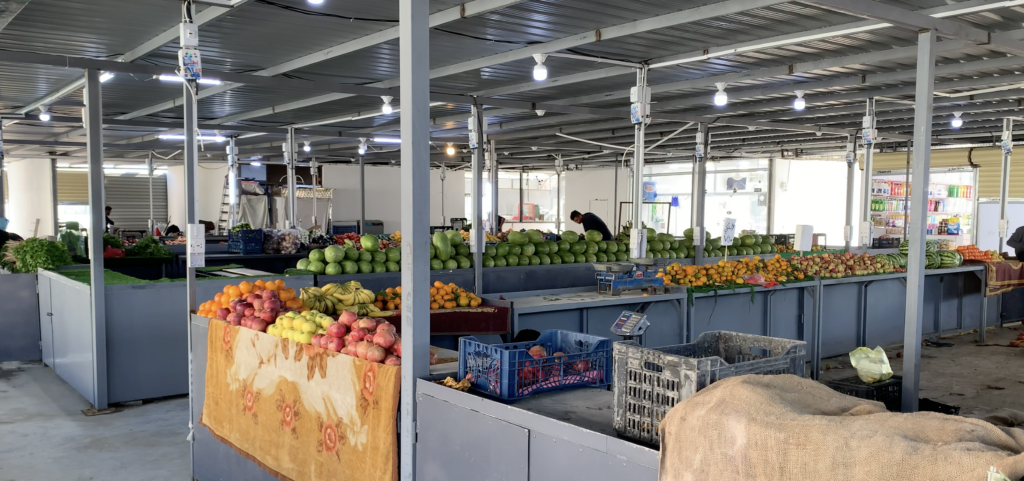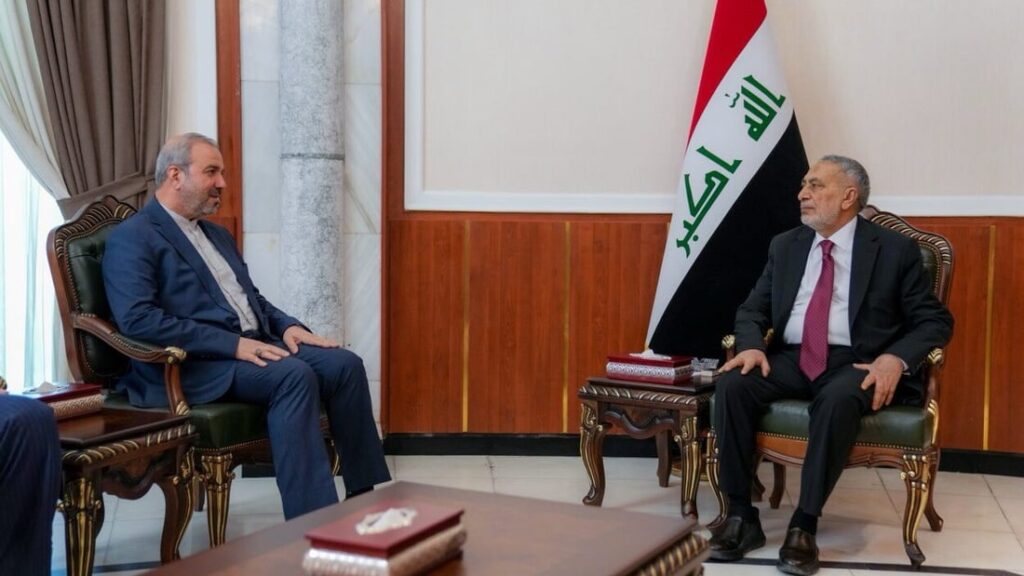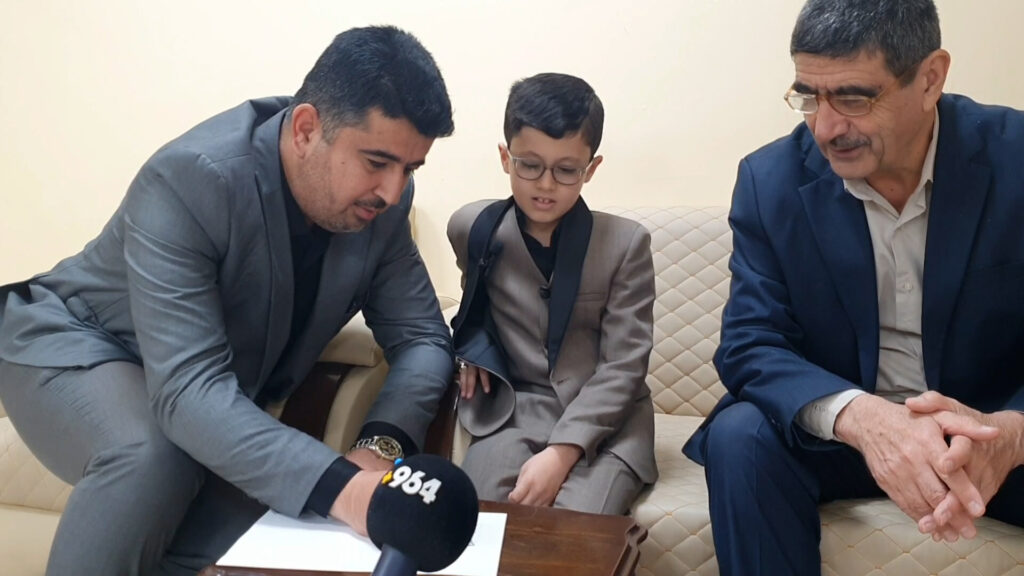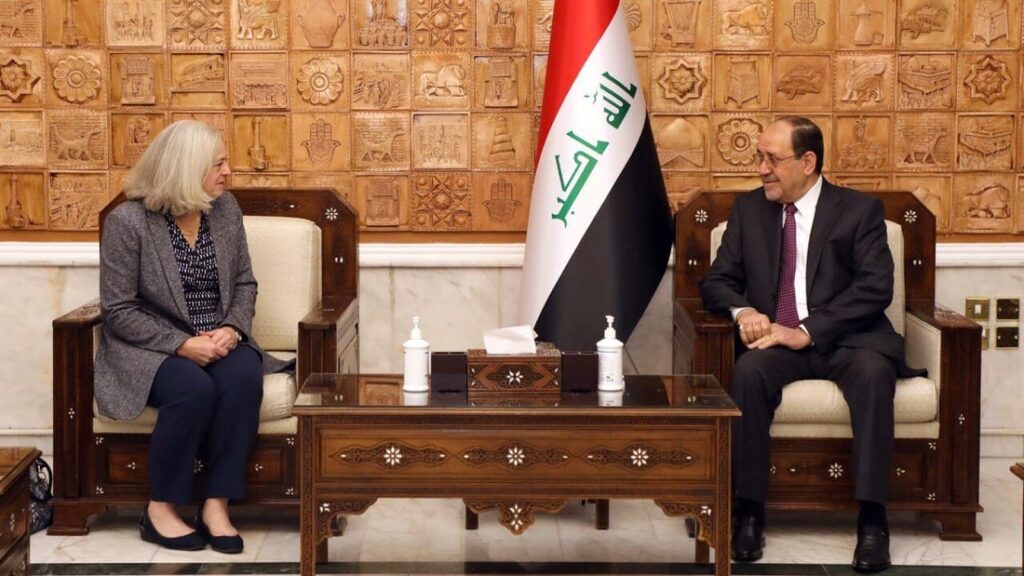Baghdad memories: what the first few months of the US occupation felt like to an Iraqi

In the years preceding the war I had been living in a small room, barely large enough to hold a single bed, a writing table and a trunk. A nook at one end housed the sink, the stove and the toilet. For decoration, I had painted one wall a bright orange-red, which amplified and radiated the hot Baghdad sunlight. The old air conditioner had died and I had no money to fix it. In the summer of 2002, the room was stifling hot, and I felt the walls were closing in on me. I hadn’t paid the rent for six months. As an architect working in private practice, I was paid $50 every few months. In the years of sanctions, I was doing ugly work for ugly people who had the money to afford their ugly houses. I wanted to leave the country, to travel and walk through the streets of different cities, but I was a military deserter, and without documentation I could not get a passport.
I had not been tortured by the mukhabarat, the regime intelligence service, nor did any of my family vanish into a mass grave, but like the rest of the nation, I was trapped with no hope and no prospects. What if, we wondered, the Leader were to become mortally ill one day? How would our lives change after his death? Would we be ruled by one of his sons? Would that be better than this? Worse? In the years before the invasion, I had felt that my life was seeping slowly away in that hot and oppressive place I called home. Now, aged 28, it seemed that a different life might be possible.
I went down to my room to listen to the news bulletin when the neighbour came knocking on my door. “The Americans are here,” he said with excitement.
“Yes, I heard on the radio that they had reached Hillah,” I said, referring to a city 60 miles south of Baghdad.
“Hillah?” the neighbour said with a grin. “They are here, down in the street.”
I went down, and I saw a few boat-like armoured amphibious vehicles spread around the intersection near my flat, as if the shores of Normandy lay just behind the buildings. They were slung with the soldiers’ large backpacks, covered in dust. Descending from one of these boats were American soldiers, like the ones we’d seen on TV, in my street, in my own city.
The soldiers spread across the road, knelt on a single knee and pointed their guns at us, the handful of people who stood watching them. Behind the soldiers came men dressed in blue vests and carrying big cameras. Their helmets bore the letters “TV”.
I sat on the kerb watching as the soldiers trained their guns at the buildings around them. One of the men in blue, tall with a bald head, and carrying two cameras with large zooms, was moving gingerly towards us, like a wildlife photographer approaching a herd of wild animals, not wanting to scare them away and yet not sure if they might charge him. He squatted a few feet in front of me and trained a long white lens at me; fuck off, I shooed him away, I didn’t want to become an item of news, another face of a defeated nation. The soldiers climbed back into their armoured boat-trucks and started driving down the road, past the national theatre and down Sadoon Street. A small crowd of men and children followed.
The armoured vehicles and the crowd moved slowly, passing in front of the Vatican embassy, where a papal diplomat, dressed in his black cassock with a purple sash around his waist, stood observing the invading army. He shook his head in disbelief and muttered to anyone who cared to listen that this was bad, that this was an illegal occupation. On the other side of the street, a chubby middle-aged Iraqi man, standing at the entrance of his shop, sputtered insults, but most of the crowd that followed the Americans was excited. The old and decaying regime had fallen. The armoured column came to a stop in front of the Meridian and Sheraton hotels, where most of the international media had set up base. In front of the hotels stood a large statue of Saddam, his right arm stretched awkwardly into the sky, inviting looks of scorn and spite from the crowd below, like someone still lingering uninvited long after the party was over.
I stood there watching, along with a few other Iraqis and a much larger crowd of foreign journalists, as a handful of enthusiastic men began banging at the plinth base of the statue with hammers and metal rods, succeeding only in cracking the marble cladding. It was taking the men a long time, and the journalists were getting bored, when one of the armoured vehicles, with a large crane on the back, started reversing into the middle of the square. A marine climbed to the top and dropped a thick rope around the neck, and then he pulled out an American flag. No, no, you can’t be doing this, I gasped, at least allow the facade of liberation to last for a day. But no, with all the arrogance of every occupying soldier throughout history, he covered the face of the defeated dictator with the flag of his victorious nation; briefly, but long enough to seal the fate of the invasion in the eyes of many.
But then, why shouldn’t he raise an American flag? Maybe in all the declarations and justifications of the war by leaders and commanders who spoke of liberation and democracy, the act of that marine was the most honest; he understood the war as a conflict between the US and Iraq – a conflict that he and his countrymen had won. It was his right to plant a flag.
The armoured vehicle pulled, the statue resisted a bit, and then gave way just above the feet. It tumbled into the square with a hollow crash. Like his state, the Leader’s statue was only an empty cast with a single metal pillar inside supporting it. A dozen or so men jumped on the statue, beating it with chains and shoes. That iconic image has played again and again on every report on Iraq ever since, as if those men represented all the nation; their jubilation was a justification, even if briefly, for the madness that would follow. The head of the statue was dragged through the streets and more men spat on it and cursed it.
I met a friend, also standing in the square. We walked around the block imagining what would come next: the hopes, the future, and the anxieties. The Unicef building, less than 50 metres away from the square where the Americans had established their base, was in the process of being looted.
We met an old woman dragging a carpet from the directorate of dams and irrigation. “This is my money, Saddam stole it from me,” she said. The carpet was old and torn and worth nothing, but maybe she felt that this was a piece of the regime, part of Saddam’s tyranny and authority, and that claiming it might magically erase her suffering of the last few decades.
The next morning I found the garage of my building piled with junk: a desk chair flipped upside down, an old air-conditioning unit, computer cases and a couple of monitors stacked on top of each other, all looted from the Ba’ath party newspaper offices nearby. A neighbour and her two sons inspected the loot cheerfully. The doorman came into the garage carrying another computer case.
I decided to walk to the presidential palace. I wanted to see where the Leader had lived. I thought that the walls of the rooms and corridors where he walked, where he conferred with his closest aides and ordered the destruction of tens of thousands of his people, might get me closer to him, help me make sense of what he was and why he shaped our lives and our history the way he did. Or maybe it was my own act of desecration of the holy sanctum of power, an act of insolence just like that of the people looting.
It was still early and the streets were empty. Tongues of black smoke poured from the windows of buildings that had been looted the night before. There were American checkpoints, defended by young soldiers and coils of barbed wire; I talked my way through them by claiming that I was a British journalist and that the Iraqi police had confiscated my papers.
The combination of the knapsack on my back and my imitation of a World Service accent did the trick. I reached the Jimhouriya bridge and crossed the Tigris. At the entrance to the presidential palace complex, I passed an armoured vehicle. I asked the exhausted soldier who sat atop the vehicle behind a machine gun if I could go inside, and he waved me a through.
I walked through the tall arches of the gate and down the well-paved, clean road, lined with trees and rose bushes. Halfway down I came across a swollen and blackened corpse that lay to the side of the road. I hesitated, I hadn’t seen a dead man before, but kept walking.
The presidential palace loomed in the distance. Giant bronze busts of the Leader adorned its four corners. His moustached head, wearing a helmet in the shape of the Dome of the Rock in Jerusalem, was peering from above with silent and solemn greatness, ignoring the insolent soldiers who had occupied his palace, continuing to stare at the distant horizon.
Inside, a young American officer gave me a tour of a massive dining hall, with a beautiful cascading wooden ceiling, now converted into a large dormitory with dozens of metal beds stacked next to each other. I wanted to walk further towards the intelligence headquarters, another symbol of the regime.
But the American told me that there was still fighting going on, so I walked back towards the gate, and hitched a ride with James Meek, a British journalist who worked for the Guardian. He hired me as his interpreter.
In the Baghdad of 2003, chaos reigned. All was permissible and everything was possible. Beer and whisky were sold on the pavements or from the boots of parked cars. Mobs ransacked government offices and ministries, apart from the Ministry of Oil, protected by American tanks. They gutted factories, pulled the doors off their hinges and stripped electrical wiring from the walls, and then sold the looted equipment as scrap metal. Weapons and ammunition from looted military camps and depots were traded on the open market. In the months and years to come, these arsenals would sustain civil wars in Iraq and Syria, with some smuggled out to nourish distant wars in Yemen and Somalia. Soviet jet fighters, hidden in the deserts outside military bases to save them from American attacks, lay half buried in the sand like the skeletons of beached whales. They, too, were stripped of their weapons and metal plates. But there was probably nothing more painful and damaging than the pillaging of the Iraqi Museum. Nearly 15,000 items were looted, most disappearing for ever.
Armed mobs roamed the city looking for plunder. What they couldn’t claim, they set on fire, like the national library, or the TV and radio archives that burned for days. In central Baghdad, I saw the smoke rising from the windows of the directorate of nationality: the archives and registries of a century were burning. Yes, destroy everything, I thought to myself with the naivety of the self-righteous. Why do we even need the directorate of nationality? Didn’t Saddam manipulate everything for his own interest? Didn’t he deport tens of thousands, and strip millions more of their will to live? Wasn’t our whole state a construct of his will? So why not destroy everything, and from the carnage a new country will be born, with no fear or oppression, where everyone will be equal and prosperous?
The “Great Leader” had dominated our lives and moulded the whole nation in his image for decades. So when his statue was toppled and people wanted vengeance for the years of oppression, they not only destroyed the symbols of his power, his palaces, his statues and murals, they also turned their anger on anything that symbolised the state, because the state was Saddam and Saddam was the state, as he used to say. Even words like citizenship, solidarity, patriotism were soiled because they were associated with his rule. In that destructive atmosphere many, foreigners and Iraqis, were willing to tear the very concept of an Iraqi state apart completely.
The poor moved out of their wretched, overcrowded neighbourhoods and started building on military camps and government lands. These new slums of one-storey concrete shacks with rivulets of oily green sewage and heaps of trash were called Hawassim, after the name of the Leader’s last battles – and the same name given to those who subsequently acquired colossal wealth.
It was also a time of grim discovery, of unearthing the horrors committed by the regime and its men. Mass graves were discovered near prisons, or on remote roadsides, where thousands of men had been buried after the failed 1991 uprising.
Bulldozers exhumed what was left of their bodies amid heaps of dry yellowish-grey earth. Women draped in black wailed and scratched their faces in grief over piles of bones and skulls that lay on plastic sheets, as a hot, dry and dusty wind blew. Some could identify their missing one from a picture stashed in a pocket, or an ID card; others hurriedly gathered bones, any bones, to bury and finally have a grave at which to mourn their lost children. In their homes, families hung pictures of relatives who had been executed or long since disappeared by the regime; they were now able to show their pride in people who up until a few weeks ago they had striven to hide and disown. In other houses, a rectangle of white appeared on grimy walls where the portrait of the Leader had recently hung.
The history that had been written by the Leader was unravelling, and people demanded that the lies be corrected. They wanted compensation and amendments for the oppression, a redress of the wrongs committed against them for decades. And just as these mass graves were exhumed, local conflicts, grievances and struggles were coming to the surface after decades buried under the monolithic power of the regime. In late April 2003, I watched thousands of people march to the city of Karbala, their feet kicking up a thick cloud of dust. They were commemorating the Arba’een, marking 40 days after the day of Ashura when Imam Hussein had been killed 12 centuries earlier. It is traditionally a day of sadness and mourning – people weep and beat their chests – but on that occasion, it was also a day of joy, because for the first time in decades Shias were allowed to freely express a religious and cultural identity long suppressed by the Leader. It was an extreme contrast to how the day of Ashura had been observed a few weeks earlier, just before the war, when I had sat in the Khadimiya, the biggest Shia shrine in Baghdad, and watched a few people shuffle quickly in and out.
In May 2003, I met an old man in a poor and crowded suburb of eastern Baghdad. He sat on an empty tin box, with a broad smile drawn across his face. He said the Americans who had brought all these tanks and planes would fix everything in a matter of weeks.
They would bring electricity and turn his wretched neighbourhood into heaven. He spoke as if he could see his tiny alleyway already transformed, the sewage flowing next to his feet disappearing, the poverty dissipating, the houses of concrete cinder blocks cleaned up and freshly painted. But weeks and months passed, and the situation was only getting worse. The collective intoxication of Iraqis at the end of the regime wore off quickly, and the people of Baghdad moved from euphoria to frustration and then fury.
When they wanted to go to hospitals they found them looted. Schools had either been burned down or were occupied by squatters. There was no one in control and public services had collapsed. Mile-long queues had formed outside petrol stations because oilwells and refineries had been damaged in the looting. Electricity failed because there was no fuel for the power plants and because transmission towers and high-voltage cables had been stripped and sold as scrap copper. With no electricity, water pumps and purification plants stopped running and raw sewage was piped into the rivers. Doctors and nurses carried guns and stood guarding the few hospitals and clinics that had not already been ransacked.
American soldiers, stupefied by the Baghdad heat, stood clueless amid that chaos, and Iraqis – accustomed to decades of efficient centralised bureaucracy – were baffled at the rash and arbitrary way the Americans were running the country. Everything was decided on the spur of the moment. Sometimes the soldiers tried to stop the looting, but mostly they just stood by; sometimes they tried to control the massive traffic gridlocks, while at others they drove their tanks into the middle of roads causing even bigger snarl-ups. The Iraqis could not believe that their new colonial masters had made no preparations for what was going to happen after the invasion. Or that the whole adventure was based solely on their might and the messianic half-beliefs of Bush and co. When the myth of American-generated prosperity clashed with the realities of occupation, chaos and destruction followed. All the suppressed rage of the previous decades exploded.
I abandoned my former life as an architect. I worked first as an interpreter and fixer, and was then promoted to news assistant – a glorified interpreter and fixer – leading a peripatetic lifestyle. For years I moved from one hotel room to another, travelling the width and length of Iraq. In reality, I – the Iraqi who had never left Iraq – was discovering my country for the first time, just as the foreign journalists were. My only advantage was that I spoke the language.
With my daily fees, an enormous fortune compared to the meagre salary I was paid as an architect, I bought a camera and I started taking pictures of the chaos unfolding around me. One picture got published, then another, and by 2004 I was hired as a stringer for a wire agency.
Around that time I published my first article in the Guardian. I wrote how both Saddam and I spent our first night in an American prison cell. The Leader had been taken earlier that day, and the American journalists for whom I was interpreting thought it unwise to show up in the Leader’s home town the day he had been captured by their government, so I volunteered to go and do some vox pops. On my way back that night we were stopped at a checkpoint north of Baghdad, and the American officer thought the driver and I looked suspicious. (Well, I did have a beard.) An hour later we were blindfolded and taken to an American military base and locked in a prison cell. We slept on the cold concrete floor, and the next day, when we were led out, I laughed at the irony of it all: we were in a former Iraqi military base, which the Americans were using, and I, who proudly spent years dodging my Iraqi military service and avoiding capture, was finally locked in an Iraqi military prison by my own supposed “liberators”.
We were told, much later, that the adventure of the Iraq war was based on the myopic vision of a band of American neoconservatives, who – in their desire to project American power in a unipolar world – argued that regime change here would bring democracy not only to Iraq but the whole Middle East, bringing it closer to the US. The oil wealth of Iraq, they thought, would pay for its reconstruction. Some still use the same argument to preach war with Iran.
In May 2003, the UN security council bestowed posthumous legitimacy on the illegal war by granting the Americans “occupying power status” with all the happy connotations the word “occupation” has in the Middle East. After some weeks of faffing about, a new American administration was established, led by Paul Bremer, a close ally of the neocons in Washington. He became the viceroy and the ruler of the country, and was given sweeping legislative and executive powers reminiscent of a British proconsul of the Indian Raj. The new occupation authority – called the Coalition Provisional Authority, the CPA – was staffed by young, naive zealots who held unchallenged powers to reshape Iraq the way their masters wanted. They represented the worst combination of colonial hubris, racist arrogance and criminal incompetence. Many would later write books about their heroic struggle in the lands of the Arabs. Some of these CPA officials were put in charge of ministries, upending existing administrative systems. Others ran whole cities or provinces.
In Baghdad, the presidential palace, former government buildings and neighbouring streets became the green zone, the centre of the delusional administration. Access to the Americans in these chaotic days when blocks of dollars were handed out without oversight established the model of corruption that the new state would be based on. Contracts were inflated for projects that were never built, and in some cases, there was corruption within the CPA itself. Fortunes were made, corruption institutionalised. Long queues formed outside the gates of the green zone; they included the sincere who wished for American help in forming an NGO, the maverick tribal sheikhs who wanted recognition and financial subsidies, and opportunists looking for any niches they might exploit.
In the years since, many western writers and journalists have argued that Bremer’s first two fatal decisions – the disbanding of the Iraqi army and all security apparatuses, and the banning of members of the Ba’ath party from public jobs, both of which left hundreds of thousands of men without pension or salary – helped instigate the insurgency that would consume the country. These western pontificators lamented the stupidity of Bush and the neocons. If only, they said, they had done their homework and planned for the post-invasion Iraq, things could have been so different. But the truth is that the occupation was bound to collapse and fail, because a nation can’t be bombed, humiliated and sanctioned, then bombed again, and then told to instantly become a democracy. No amount of planning could have turned an illegal occupation into a liberation.
The war that was based on a lie not only destroyed Iraq and unleashed a sectarian war that would engulf the region, but it permanently crippled democracy in the Middle East. So, democracy was another victim of the criminally incompetent administration. “You want democracy? Didn’t you see what democracy did to Iraq?” became the repeated refrain of dictators and potentates throughout the region.
Adapted from A Stranger in Your Own City: Travels in the Middle East’s Long War by Ghaith Abdul-Ahad, published by Hutchinson Heinemann on 2 March and available from the Guardian Bookshop.





